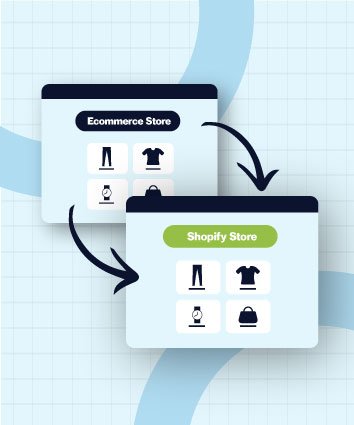How eCommerce Content Marketing Strategy Can Help Your Business

Written by Nevil Bhatt
6 min read

Most brands understand they need content, but far fewer have a clear strategy for using that content to drive sales. An ecommerce content marketing strategy is not just about producing blog posts or videos—it’s about using the right content, at the right time, in the right place to help your customers make a buying decision.
Below, we’ll break down why content marketing matters, what it can achieve for ecommerce brands, and how to build a strategy that delivers measurable business value.
What Does Ecommerce Content Marketing Really Mean?
Content marketing in ecommerce means creating useful, relevant content to support the buyer throughout the purchase journey. This includes everything from how-to videos and product comparisons to written guides and social proof like customer reviews.
But it’s more than just checking boxes.
An effective connect strategy connects content to business objectives. It identifies exactly what a potential customer needs to see, read, or watch at each stage—from awareness to consideration to purchase—and delivers that content in the right format and channel.
How Content Marketing Supports the Buyer’s Journey
The buyer’s journey is a crucial concept in content marketing. It consists of three stages: awareness, consideration, and decision. eCommerce content marketing can be tailored to meet the needs of customers at each of these stages.
1. Awareness Stage
At this stage, potential customers are just becoming aware of a problem they need solving or a product they may need. Your content should focus on educating and raising awareness about these issues. Blog posts, videos, and guides that answer common questions or provide insight into the customer’s pain points are crucial.
Example: A beauty brand could create a blog post titled “How to Protect Your Skin from Sun Damage,” targeting consumers who may not be aware of the risks of UV exposure or the best products to use.
2. Consideration Stage
Once the customer understands their problem, they begin considering solutions. Your content here should focus on showcasing your products or services as viable solutions. Product comparison pages, testimonials, case studies, and in-depth product descriptions all play a role in influencing the buyer’s decision during this stage.
Example: A home fitness brand might produce a video comparing different types of workout equipment, showcasing how their product fits into various home gym setups.
3. Decision Stage
At this stage, the buyer is ready to make a purchase. Your content should focus on conversion, providing clear calls-to-action (CTAs) and making the buying process as seamless as possible. Offering limited-time discounts, product demonstrations, and customer reviews can tip the balance in your favor.
Example: A clothing retailer might send an email to subscribers offering a limited-time discount, along with a link to a product page featuring a detailed review from a satisfied customer.
Key Components of an Effective eCommerce Content Marketing Strategy
To truly harness the power of SEO marketing for eCommerce, businesses need to structure their strategies carefully. Here are the core elements that every eCommerce brand should focus on when building a content strategy.
1. Understanding Your Target Audience
Before creating any content, you need to understand who you are speaking to. By developing customer personas and conducting thorough market research, you can ensure your content speaks directly to the needs and desires of your target audience.
Example: An eco-friendly brand might focus on sustainable living content for environmentally-conscious consumers. Content could include eco-friendly living tips, product guides, or sustainability news.
2. High-Quality Visual Content
In eCommerce, visuals are everything. Buyers want to know exactly what they’re purchasing, and they want to see products in action. High-quality images, videos, 360-degree views, and lifestyle shots of products being used help create a sense of trust and satisfaction.
Incorporating video content, such as how-to guides or demonstrations, can be highly effective. Studies show that consumers are more likely to make a purchase after watching a product video.
Example: Outdoor apparel brands use videos that show their products in real-life environments, like hiking, skiing, or camping. This not only demonstrates the product’s durability but also connects with customers who are passionate about the outdoors.
3. SEO for eCommerce
Content is only valuable if it reaches your target audience. Optimizing your content to rank higher on search engines increases visibility and drives organic traffic. For eCommerce businesses, this means optimizing product pages, category pages, blog posts, and more with the right keywords, meta tags, alt text for images, and relevant internal links.
Example: An online furniture store could optimize product pages with keywords such as “modern sectional sofa,” “ergonomic office chair,” and “affordable home furniture” to ensure that users searching for these terms can easily find their offerings.
4. User-Generated Content and Reviews
Customer reviews, testimonials, and user-generated content (UGC) are powerful tools that can influence purchasing decisions. UGC acts as social proof, showing potential buyers that others trust and have had positive experiences with your products.
Encourage satisfied customers to share photos of themselves using your products on social media, or feature reviews prominently on product pages to help others make more confident purchase decisions.
Example: A fitness equipment brand can create a dedicated “Customer Spotlight” section on their website where they feature user-submitted photos and success stories, providing authenticity and credibility to their brand.
5. Content Distribution and Promotion
Creating content is only part of the equation; getting it in front of your audience is equally important. Your content should be distributed across multiple channels, including social media platforms, email campaigns, and your website.
Paid advertising can amplify your reach, targeting specific customer segments with tailored content, while organic social media posts and blog articles can build long-term engagement.
Example: A jewelry brand might promote a new collection on Instagram through influencer partnerships and sponsored posts, sharing links to their website for easy purchasing.
Conclusion
eCommerce content marketing is a long-term investment that, when done correctly, can significantly impact your business’s success. It helps build trust, increase visibility, and guide customers through their buying journey. By focusing on understanding your audience, creating high-quality content, and optimizing for search engines, you can enhance your brand’s online presence and drive more conversions.

Nevil Bhatt
Nevil is the owner of one of the fastest-growing digital marketing agency in India. Having a great knowledge of the IT field and business management, he decided to bring a revolution in the digital world by providing valuable and customised solutions across the globe. Whether it's real or digital, he knows how to handle sustainable relationships and meaningful interactions.




